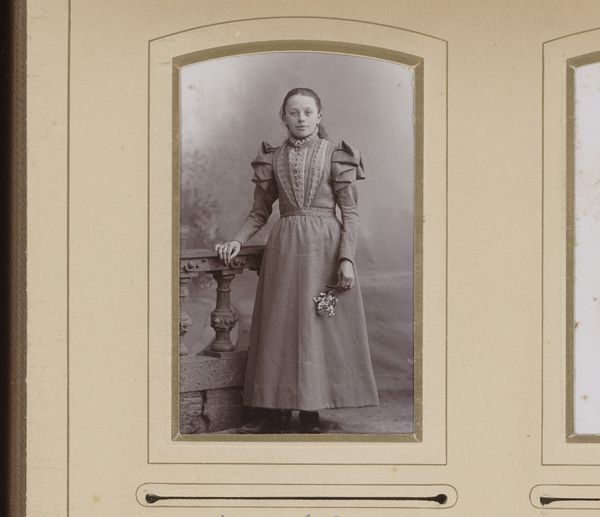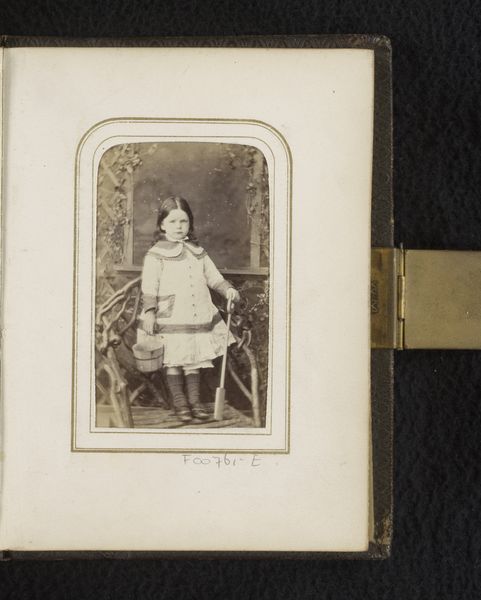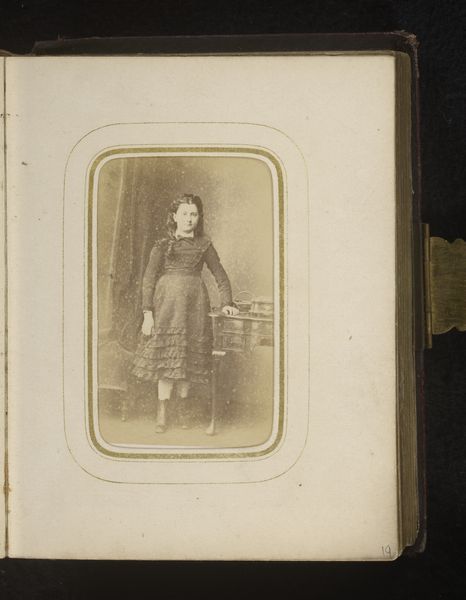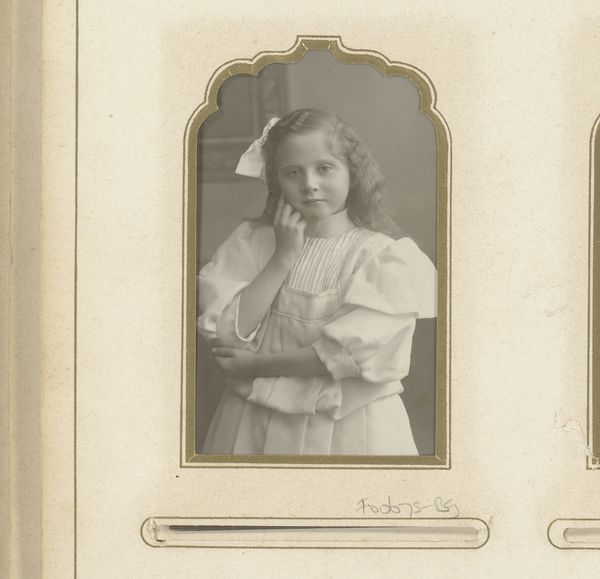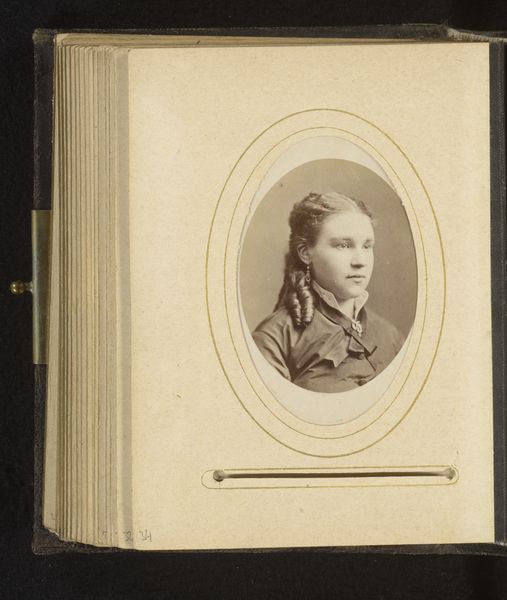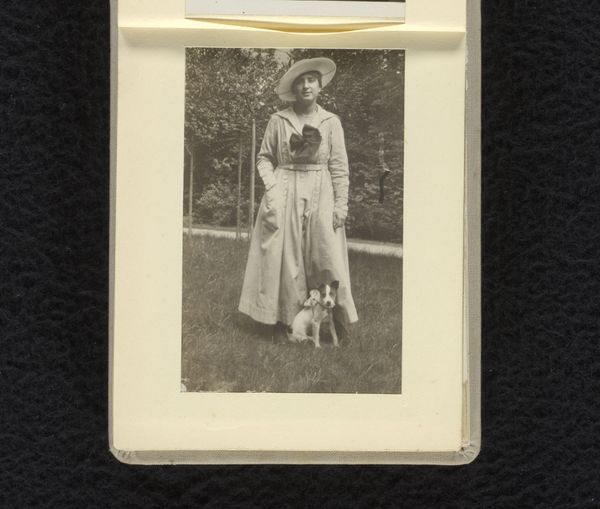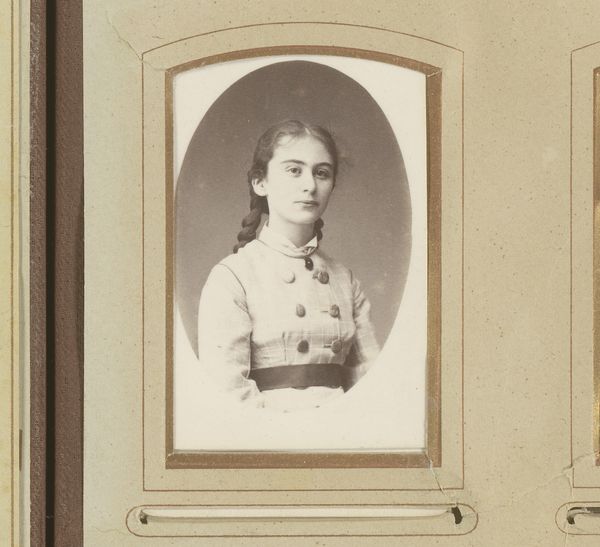
photography
#
portrait
#
charcoal drawing
#
photography
#
realism
Dimensions: height 84 mm, width 54 mm
Copyright: Rijks Museum: Open Domain
Editor: Here we have "Portret van een jonge vrouw" by Johannes Vlaanderen, dating from around 1890 to 1910. It looks like an early photograph, sepia-toned and capturing a young woman with a delicate expression. The photograph seems like it might have been taken by a professional studio for upper-middle class client, perhaps even a child worker, posing her almost as a miniature adult. How would you interpret it? Curator: Immediately, my interest lies in the production of this image. Looking closely at this young woman's dress—its details, buttons, the striped fabric at her collar and wrists—reveals much. These fabrics were likely machine-made, reflective of burgeoning industrialization. Can we see within the creation of these materials, clues about labor practices and consumption of the time? Editor: That's interesting. I was more focused on the individual and the pose. But looking at it now I wonder, was her garment something that was made specifically for the photograph? A disposable means of crafting an identity? Curator: Exactly! Consider the very nature of photographic materials at this time, the chemicals involved, the printing processes. All these elements speak to broader social structures and industrial developments. Photography itself, still a relatively novel technology, reflects new possibilities of recording and consuming images, changing concepts of labor and image creation. Is this art or a new kind of crafted product that exists due to changing attitudes towards art creation, or the industrialization of portraiture and fashion itself? Editor: So, beyond just seeing a portrait of a young woman, you're suggesting we can see evidence of changing production and consumption. Curator: Precisely. And even how that production is veiled and carefully styled by the consumer to represent themself in an aspirational light. What story is absent from the photograph in the pursuit of its carefully curated image? Editor: This definitely gives me a new appreciation for how seemingly simple images can contain layers of information about materials and how they relate to larger social and economic contexts. I guess I learned that looking closely at the "stuff" of art can tell a more detailed historical narrative. Curator: Agreed. Analyzing art this way brings valuable nuance, shifting our understanding from individual artistry to broader material conditions shaping artistic production.
Comments
No comments
Be the first to comment and join the conversation on the ultimate creative platform.


